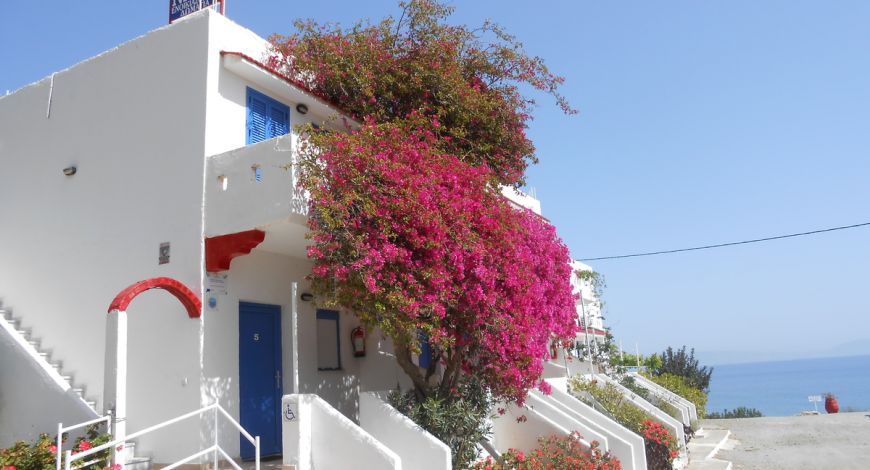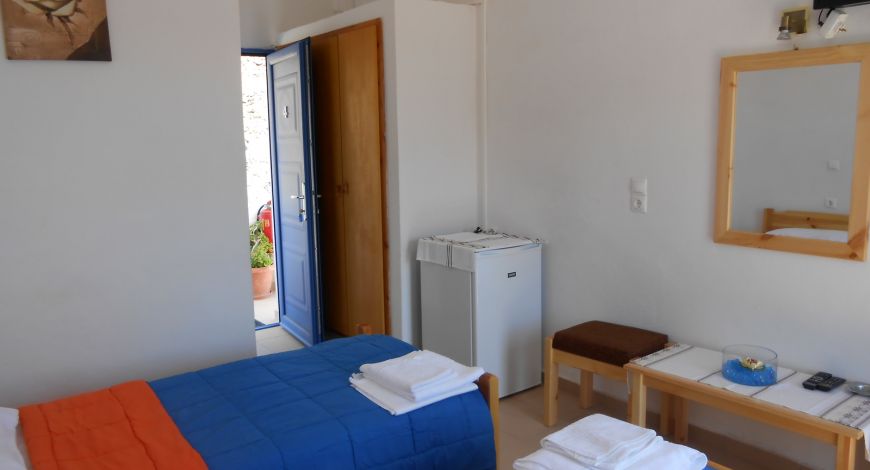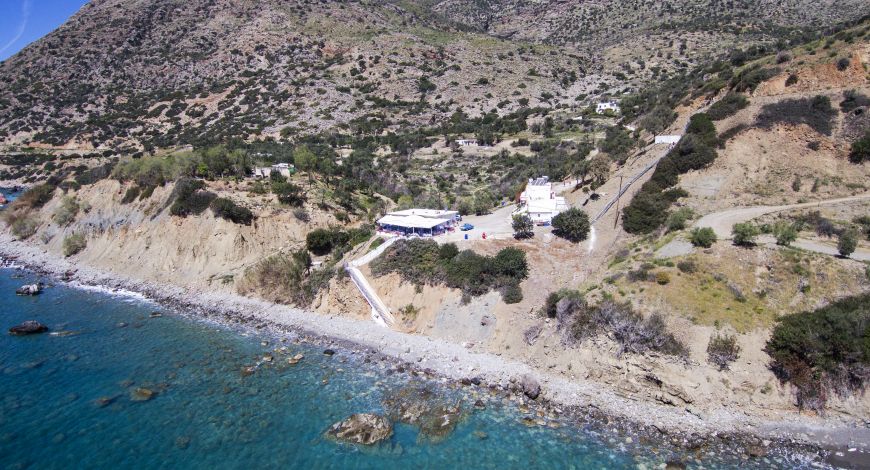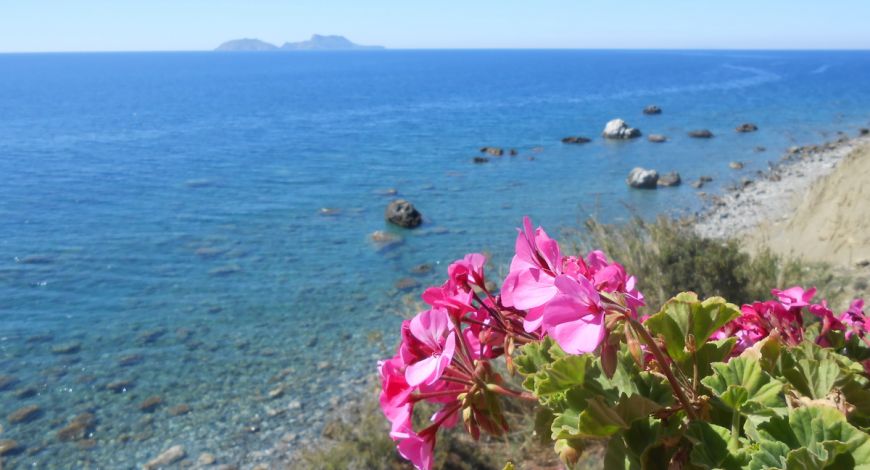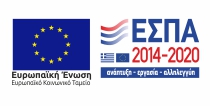-

Taverna & Rooms Nikos
Agios Georgios
Una vista mozzafiato sulle acque cristalline della Creta meridionale
-

Un posto ideale
per vacanze rilassanti!
Agios Georgios
A sud di Creta, a poca distanza da Agia Galini, si trova la spiaggia di Agios Georgios. È luogo lontano dalla frenesia della vita cittadina, con acque cristalline e una spiaggia incontaminata. Il posto giusto per una vacanza all’insegna del relax.
Sulla strada per Agios Georgios, troverete molti sentieri che vi condurranno a piccole cappelle o a minuscole e tranquille spiagge di ciottoli.
Un posto ideale
per vacanze rilassanti!
AFFITTACAMERE
Camere accoglienti a due passi dalla spiaggia.
TAVERNA
Goditi i sapori della tradizione ammirando il mare.
WI-FI GRATUITO
WI-FI gratuito disponibile in tutte le zone dell’hotel.
ARIA CONDIZIONATA
Tutte le stanze dispongono di aria condizionata.
Nikos Place
Viste
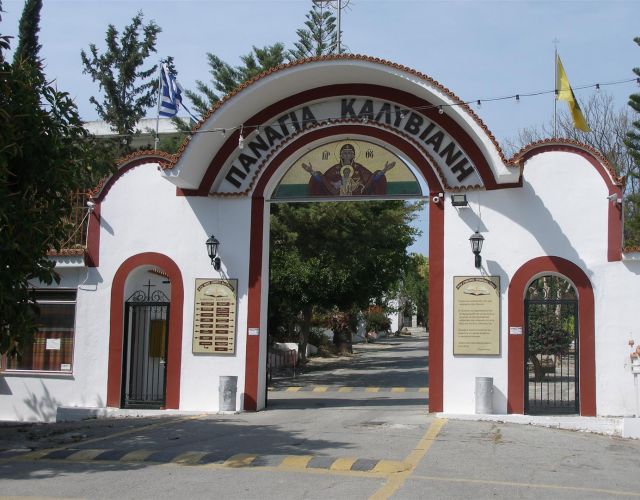
Monastery of Panagia Κaliviani
This beautiful monastery is known for its charity work. A complex of institutions is developed around the Monastery such as laboratories that craft vestments, painting and weaving. Also there is a museum of ecclesiastical and folk crafts, public elementary school and kindergarten.
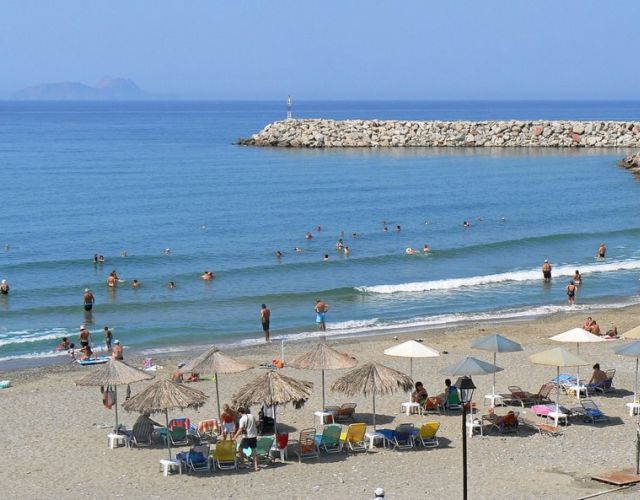
Kokkinos Pyrgos beach
The small port of Kokkinos Pyrgos separates its two beaches. On the west side there is a rocky and pebble beach that stretches to Agia Galini and on the east side a beach that reaches Kommos.
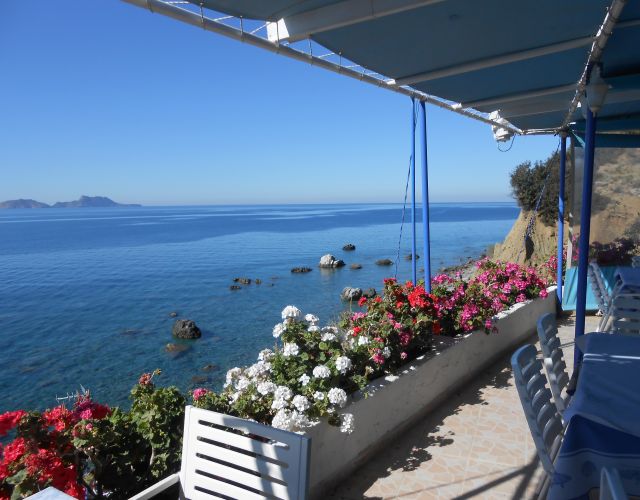
Taverna
Dal 1977, gli ospiti della nostra taverna si godono i piatti della tradizione cretese e la vista mozzafiato sul mar libico.
Se volete assaggiare pesce fresco, aragosta viva e la gustosa cucina locale cretese sentendovi come se foste in crociera, la sola cosa che dovete fare è venirci a trovare.
La nostra taverna opera nel pieno rispetto delle più rigorose norme di sicurezza alimentare,HACCP e ISO.
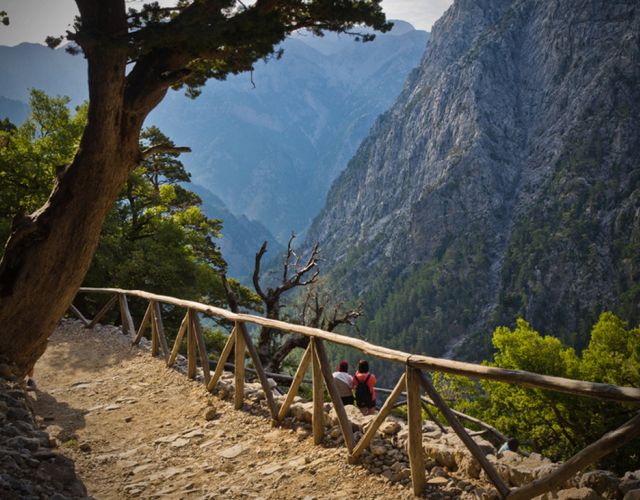
The gorge of Samaria
The gorge of Samaria is the second most visited tourist attraction on Crete (following the Minoan palace of Knossos) and by far the most popular walk. More than a quarter million people walk through the gorge every year from May to October. In winter the gorge is closed to visitors due to danger posed by water and falling stones.
The Samaria gorge is the longest one in Europe. It is an area of stunning natural beauty. Rare flora and fauna have survived in this area and are protected. The mountains that have formed it are wild, high and steep. One will pass through forests of ancient cypresses and pines and descend between vertical cliffs. The path starts from Xyloskalo (near Omalos) in the White Mountains at an altitude of 1230 meters and comes to an end at the village of Agia Roumeli at the Libyan sea. Walking through the gorge usually takes anything from 3 to 5 hours (excluding the breaks).
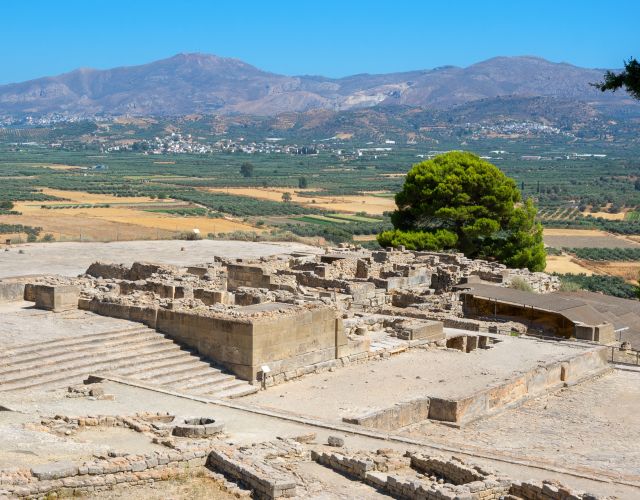
Phaistos - Archaeological site
The Minoan palace of Phaistos was an economic, administrative and religious centre and supervised the fertile plain of Messara. The ancient ports of Matala and Kommos where under the control of Phaistos. Nowadays it is an important archeological site.
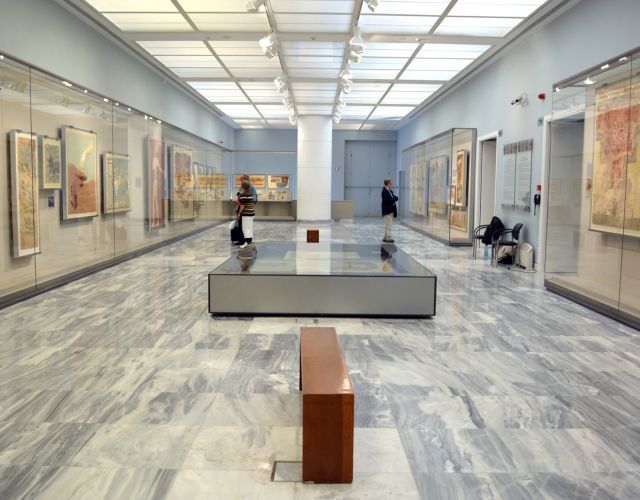
Heraklion Archaeological Museum
The Herakleion Archaeological Museum is one of the largest and most important museums in Greece, and among the most important museums in Europe. It houses representative artefacts from all the periods of Cretan prehistory and history, covering a chronological span of over 5,500 years from the Neolithic period to Roman times.
The singularly important Minoan collection contains unique examples of Minoan art, many of them true masterpieces. The Herakleion Museum is rightly considered as the museum of Minoan culture par excellence worldwide.
The museum, located in the town centre, was built between 1937 and 1940 by architect Patroklos Karantinos on a site previously occupied by the Roman Catholic monastery of Saint-Francis which was destroyed by earthquake in 1856. The museum's antiseismic building is an important example of modernist architecture and was awarded a Bauhaus commendation. Karantinos applied the principles of modern architecture to the specific needs of a museum by providing good lighting from the skylights above and along the top of the walls, and facilitating the easy flow of large groups of people. He also anticipated future extensions to the museum.
The colours and construction materials, such as the veined polychrome marbles, recall certain Minoan wall-paintings which imitate marble revetment. The two-storeyed building has large exhibition spaces, laboratories, a drawing room, a library, offices and a special department, the so-called Scientific Collection, where numerous finds are stored and studied. The museum shop, run by the Archaeological Receipts Fund, sells museum copies, books, postcards and slides. There is also a cafe.




